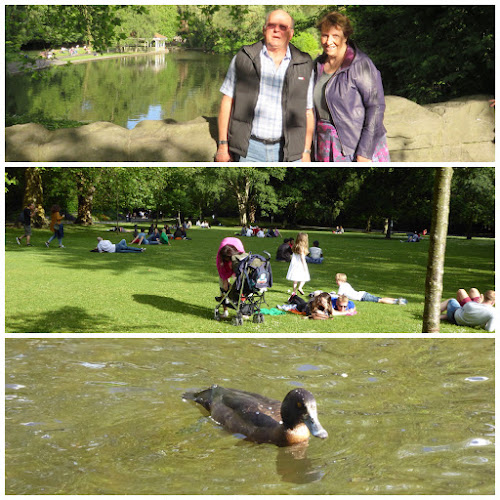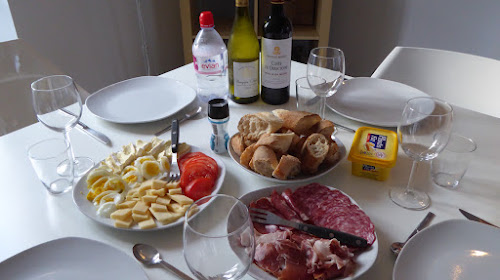My recollection from a previous visit to Dublin was of being frozen to the bone. This was a much sunnier experience:
There are a number of narratives that have intrigued me in Dublin.
Dublin has a grand history in the arts; poetry, plays and literature stand out! All those men, but where are the women.
It also has a proud history in education with Trinity College being a masthead. The Book of Kells alone is a milestone in man's desire to share knowledge, and communicate effectively between nations and across generations.
You can not stay in the town without hearing of, and seeing evidence of their Fight for Independence. The 1916 uprising is often mentioned and Kilmainham Gaol where 14 leaders were executed is now a major, and expanding tourist attraction. The Leaders of the rebellions of 1798, 1803, 1848, 1867 and 1916 were detained here.
We heard a number of stories explaining Dublin's many coloured doors. One says that Queen Victoria requested all doors to be painted black to mark her husband's death, so the Irish painted them many colours instead. It as good a story as any, but with no factual basis!
The top photo is the Dublin Custom House. It had to overcome community protests, and construction on a swamp! Started in 1781, it was finished ten years later, projecting four distinct facards.
On the north face at Beresford Place are personifications of the four continents of world trade – Africa, America, Asia, and Europe. What! No Australia? Talking pre 1800, I guess you can understand our non existent profile.
The Guinness factory is huge! Producing 30 million pints a day, it has to be huge.

The Samuel Beckett Bridge is shaped like a harp on its side. It is located in the rejuvenated old Dockland that is now their financial area. Many international companies have a presence here to assist them to minimise (or avoid) paying tax in countries like Australia, U.K., U.S.A. etc.
The older O'Connell Bridge over the River Liffey, is only a little further upstream.

On the day we toured Docklands there was a cruise ship in port: MS Royal Princess with 3,600 passengers. One of 23 cruise ships this month!
Trinity College Library Dublin is the largest library in Ireland and, as a legal deposit or "copyright library", it has rights to receive material published in the Republic of Ireland free of charge. The volume held is therefore large.
The Library is the permanent home of the famous Book of Kells. Two of the four volumes are on public display, one opened to a major decorated page and the other to a typical page of text.
We happily paid the 9 Euro each (seniors price) to view the Book of Kells and the Library. Photography is strictly banned in the dimly lit Kells area, but non flash photography is allowed in the library where we were also able to watch restoration work.
The design of the library is impressive with a high dome ceiling, and two rows of male figures, one down each side.
The busts are of the great philosophers and writers of the western world and also of men connected with Trinity College - famous and not so famous. I photographed Isaac Newton as my vote for a great scentist.
I was starting to wonder why there were no Irish women. One B and B proprietor said she was one of 15 children; another said "1 of 12", so I'm sure they were busy.

















































